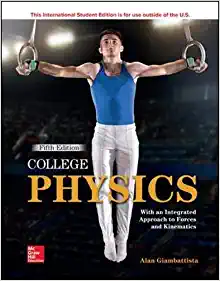A parallel plate capacitor used in a flash for a camera must be able to store 32
Question:
A parallel plate capacitor used in a flash for a camera must be able to store 32 J of energy when connected to 300 V. (Most electronic flashes actually use a 1.5 to 6.0 V battery, but increase the effective voltage using a dc-dc inverter.)
(a) What should be the capacitance of this capacitor?
(b) If this capacitor has an area of 9.0 m2, and a distance between the plates of 1.1 × 10−6 m, what is the dielectric constant of the material between the plates? (The large effective area can be put into a small volume by rolling the capacitor tightly in a cylinder.)
(c) Assuming the capacitor completely discharges to produce a flash in 4.0 × 10−3 s, what average power is dissipated in the flashbulb during this time?
(d) If the distance between the plates of the capacitor could be reduced to half its value, how much energy would the capacitor store if charged to the same voltage?
Step by Step Answer:

College Physics With An Integrated Approach To Forces And Kinematics
ISBN: 978-1260547719
5th Edition
Authors: Alan Giambattista





